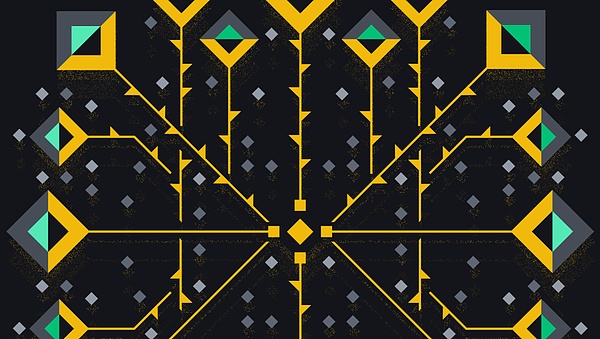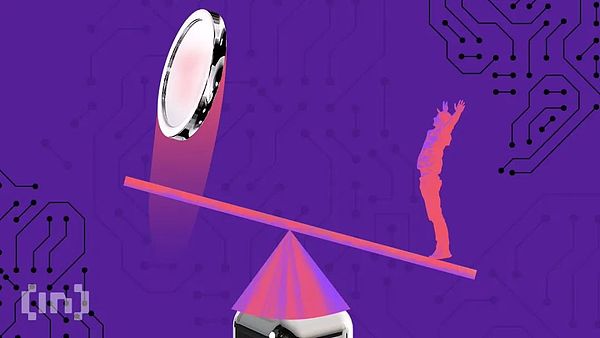Cryptocurrency Exchange Reserve Proof is above? And why is it important?
Cryptocurrency Exchange Reserve Proof is above? And why is it important?
After the FTX crash, theReserve certification is always a hot topic. Investors are asking exchanges to provide proof of their cryptocurrency holdings.
But what exactly are they and why do they matter?
Proof of Reserves, or Proof of Reserves (PoR), is used to verify that a user's crypto assets are fully retained in the trading platform/crypto company.
A certificate of reserves is an independent audit conducted by a third party, and companies usually commission a specialized organization to perform the certification. The third party eventually publishes the results and warns of any problems (detailed below) to help investors understand the financial health of the centralized exchange and whether they have sufficient funds to match customer deposits.
Since the advent of FTX, third-party organizations have performed a large number of different types of attestations, the important ones of which are listed below for illustration.
Reserve proofs based on Merkle trees
One way to perform authentication is to use the PoR protocol - which uses Merkle Tee, a tree structure commonly used in cryptography and computer science, to prove the integration of a large amount of data into a single hash and to verify the integrity of the data set.

With cryptographic proofs, the PoR protocol verifies the validity of user balances and transactions.
Crypto Exchanges can publish PoR certifications based on the Merkle Tree on a regular basis, including weekly, monthly or quarterly releases in the form of snapshots. Alternatively, companies can provide real-time certifications on their official websites.
While snapshots may be sufficient to prove the solvency of a crypto company at a given point in time, it is the real-time proofs that are clearly the most effective when it comes to verifying an exchange's reserves, as they enable anyone to confirm whether the provider of funds is an exchange at any given moment.
Chainlink initiates reserve certification protocol
Decentralized prophecy machine provider Chainlink Labs has launched its own proof-of-reserve system, which the company says is "designed to help Web2 and Web3 projects prove asset reserves through automated verification."
Launched in 2020, the first user of the Chainlink proof-of-reserve system is the TrueUSD stablecoin, which connects Chainlink nodes to the exchange's API, vault addresses, and a proof-of-reserve smart contract that users can query to determine whether the exchange's crypto reserves equal its liabilities.
Its blockchain-independent system provides all data deposited, borrowed and pledged on a specific protocol.
Chainlink's system can also provide security for exchanges to ensure that trading platforms do not issue more tokens than they have in reserve assets.
Which exchanges have reserve certificates?
A number of exchanges and crypto lending platforms (such as Kraken, Nexo, BitMEX and Gate.io), had already moved to launch their respective proof of reserves before FTX imploded.
But more trading platforms only realized the importance of publishing proof of reserves (depending on the exchange) after the external impetus of the November event.
These include Binance, the world's largest crypto exchange, which was the first to make its reserve address public on Nov. 10, after abandoning its acquisition of FTX. It released a bitcoin and ethereum system based on the Merkle tree, and OKX, Crypto.com and ByBit have taken a similar approach.
Coinbase, on the other hand, says it has proven its reserves as a public company with SEC audit documents.
On Nov. 25, the San Francisco-based digital currency trading platform noted that "on-chain accounting is the future" and said it was exploring "various new ways to prove reserves through crypto-native methods.
Coinbase recently launched a $500,000 developer grant program. These grants are designed to incentivize individuals or teams that "make progress and breakthroughs in on-chain accounting, privacy protection related to proof of assets or liabilities, including the application of zero-knowledge technologies.
What is there to worry about?
Corporate open reserves are proving to be a step in the right direction for this industry.
In theory, this helps ensure the safety of customer funds and can demonstrate that the company has sufficient liquidity, but it can also give users a false sense of security.
Exchanges only need to provide a snapshot to provide an overview of the assets held at the address associated with the platform; however, one problem is that the vast majority of exchanges do not disclose the company's liabilities to their clients. This can lead to a situation where an exchange uses proof of reserves to appear transparent on its books, but in reality does not disclose its true solvency risk.

That's what Kraken CEO Jesse Powell recently emphasized when he said proofs must have three components: a sum of customer liabilities (auditors must exclude negative balances), user-verifiable cryptographic proofs (each account is included in the sum), and a signature proving that the custodian controls the wallet.
Powell specifically criticized Binance's publication of the certification in November, saying it was "either ignorant or deliberately inaccurate" and that "an asset statement without a liability component is meaningless.
Binance stirs up more controversy
In order to calm concerns about its financial situation, Binance hired the South African branch of accounting giant Mazars to prepare an additional proof of reserves report for it.
According to the report released last week, at the time of the assessment, Binance controlled assets in scope that exceeded 100% of its total platform liabilities.
The report has sparked more controversy. The experts stressed that without any information on the quality of Binance's internal controls (such as its system for keeping accurate books and records), the report provided by Mazars is almost meaningless.
Moreover, as a recent report in the Wall Street Journal highlights, the Mazars report is actually a five-page letter rather than a real audit report. It does not mention the effectiveness of Binance's internal financial reporting controls, but rather emphasizes that Mazars "did not express an opinion or assurance conclusion," suggesting that it did not provide assurance on the figures.
Mazars said it worked through "agreed procedures" required by Binance, but "did not make any representations about the appropriateness of the procedures.
On top of that, the numbers in the letter basically indicate that only 97% of Binance's bitcoins are pledged.
A Binance spokesperson explained that "the 'gap' in 3% is due to bitcoin being lent to customers through margin or loan programs, who may have used tokens as collateral outside the scope of the report."
Shortly after, Mazars, which had performed similar certifications for Crypto.com and Kucoin, announced that it would stop any cooperation with crypto companies.


